The Brinson-Harrison Operation
(Whigham, Georgia)
In terms of precision in syrup-making methodology, faithfulness to roots, family orientation, equipment restoration, and hygiene, this operation cannot be beat! Take a moment to visit Jerry Brinson, Mrs. Brinson, their son Anthony, and Mrs. Brinson’s father, Mr. Roscoe Harrison, while I support those statements.
Jerry and Mrs. Brinson (Slide 1) stand by a street rod that Jerry restored. Like the syrup-making operation, there was not a blemish on the automobile. Following the vintage-automobile theme, Slide 2 shows the front of the syrup house. The grinding shelter (not shown) is attached and open; Slide 3 shows a wagonload of C.P. 36-111 under the shed and ready to grind. (On exposure to sun, C.P. 36-111 develops color as shown; as long as the fodder is attached, this cane is greenish. For more on C.P. 36-111, please see my essay, the IFAS site, or the bulletin of Broadhead and Zummo.) The Brinsons also grow C.P. 29-116 (Yellow Gal).
As the syrup-making season approaches, Mr. Roscoe Harrison’s step gets a little more lively. Eighty-nine when this photograph was made in 2002, Mr. Harrison (Slide 4) claims exclusive right to feed the mill, a Golden No. 27 (Slide 5), which is powered by a Hercules 7-HP engine (Slide 6). Since his family has farmed this land since time immemorial, no one questions Mr. Harrison’s claim. The Brinson side has also been in the Whigham area since it was settled, taking part in opening the Hawthorne Trail.
This mill and engine were acquired by Mr. Harrison’s father, Joe Harrison, as settlement of a debt. Mr. Joe Harrison used the set-up and ran a syrup-making operation perhaps 50 m from the present site in the early 1900s. Over the years, syrup making ceased and the equipment fell into disuse. Anthony started playing with the old engine when he was just four and, to coin a phrase, the rest is history.
After being expressed, the juice is pumped into a holding vat (Slide 7). The housing for the vat is a cane wagon that was originally owned by Mr. Will Walker. The juice is automatically delivered to a kettle (Slide 8). The kettle is heated by gas burners (Slide 9) of the same general successful design as used by Ronny Herring. The gas runs at 20 psi (Slide 10).
A large outer rim is mounted onto the kettle (Slide 11) and an inner rim, about 7 inches tall, can be lowered onto the flange by a lever shown at the lower right of this slide. Note the operational sink that is connected to the kettle outer rim. As shown, this sink facilitates skimming. Slides 12 and 13 show details of the double-rim system and demonstrate the efficacy of the burners.
As the syrup nears completion, Anthony (Slide 14) wheels over the bottling apparatus, and then takes up the syrup, filters it, and bottles it (Slide 15).
Pardon if I get a bit soppy, but seeing another mill on location was a kind of spiritual experience. The Brinson-Harrison operation is between Whigham and Calvary, just a few miles from Cairo, Georgia. As many readers know, Cairo was the center for shipping syrup out of this area and was the home of the USDA sugar-cane station that was devoted to cane syrup. Slide 16 shows the Chattanooga No. 92 that was used by Yoder in his work in the early part of the 20th century! The Chattanooga No. 92 is quite a big mill (2700 pounds, 12 x 12 inch large roller (like the No. 72), and a juice output of 2000-2500 gallons per day). As I understand, this mill was spared a lot of hard work. Yoder ran single bundles of 10 stalks wired together and obtained all the needed juice for his experiments.
My thanks to all of the Brinson-Harrison operation, especially to Anthony for showing me other syrup-making equipment on location, Mrs. Brinson for her biscuits, ham and “mothering” Liz (who accompanied me), Mr. Harrison for a bottle of the great syrup, and Jerry for his patience in showing me around.
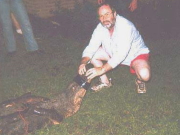
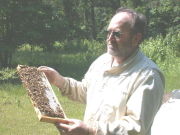
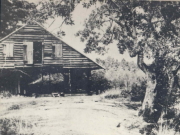
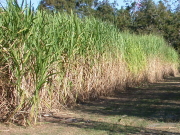
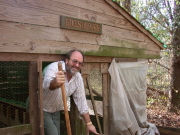
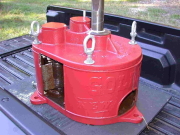
%20(98%20)%20Jerry%20&%20Mrs.%20Brinson%20by%20car-t.jpg)
%20(64%20)%20Syrup%20Shed-t.jpg)
%20(94%20)%20CP%2036-111-t.jpg)
%20(88%20)%20Mr.%20Harrison%20feeding%20cane-t.jpg)
%20(88%20)%20Golden%2027-t.jpg)
%20(73%20)%20Hercules%207%20HP-t.jpg)
%20(66%20)%20juice%20vat-t.jpg)
%20(66%20)%20filling%20kettle-t.jpg)
%20(96%20)%20burners-t.jpg)
%20(96%20)%20gas%20pressure-t.jpg)
%20(86%20)%20skimming-t.jpg)
%20(76%20)%20double%20ring%20system-t.jpg)
%20(71%20)%20boiling%20kettle-t.jpg)
%20(87%20)%20A%20Brinson%20taking%20up%20syrup-t.jpg)
%20(96%20)%20A%20Brinson%20bottling-t.jpg)
%20(96%20)%20Yoder%20Chatt%2092-t.jpg)